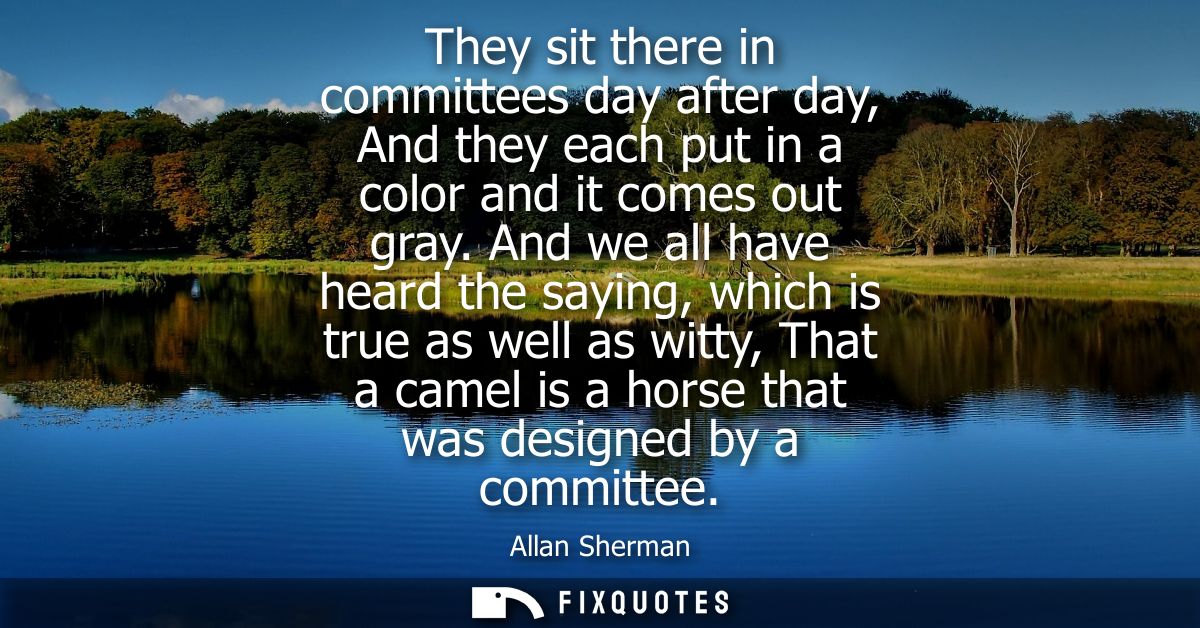"They sit there in committees day after day, And they each put in a color and it comes out gray. And we all have heard the saying, which is true as well as witty, That a camel is a horse that was designed by a committee"
About this Quote
The passage highlights the stultifying effects of decision-making by committees, emphasizing how collective processes can unintentionally dilute individual creativity and vision. When a group comes together to solve a problem or design something, each participant often brings their own preferences and biases. In an attempt to reach a consensus or avoid conflict, these distinct perspectives are merged into a compromise that tries to accommodate everyone. Instead of producing something bold or innovative, the outcome is bland, safe, and uninspired, represented metaphorically by the color gray.
The use of color in the quote serves as a vivid analogy. Color suggests vividness, personality, and distinctiveness, but when mixed carelessly, vibrant colors turn into an unremarkable gray. This illustrates how original ideas can be lost when individual contributions are blended without a singular vision guiding the process. Rather than achieving a meaningful synthesis, the result is often something with the edge and uniqueness removed.
The allusion to the well-known saying about a camel being a horse designed by a committee offers a humorous yet biting critique of collaborative design without clear leadership. A horse is generally seen as elegant, optimized, and functional, whereas a camel, with its peculiar adaptations and less graceful form, represents the unintended consequences of too many competing inputs. The camel, although extremely well-suited to its environment, is used here for comic effect to highlight how the original vision (the horse) becomes distorted as more people alter or add features in an attempt to satisfy everyone’s preferences.
Underlying the humor is a cautionary message about bureaucracy, groupthink, and the dangers of over-collaboration. Creative endeavors, strategic decisions, and ambitious projects often stagnate or degrade when too many hands try to shape them without unity of purpose or decisive leadership. Instead of bold, effective solutions, the end product is often mediocre or cumbersome, providing a lesson about the value of strong vision and the risks of excessive committee involvement.
More details
About the Author

